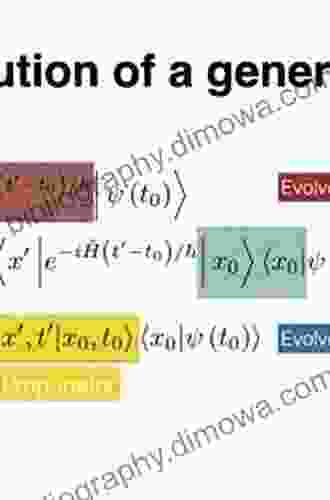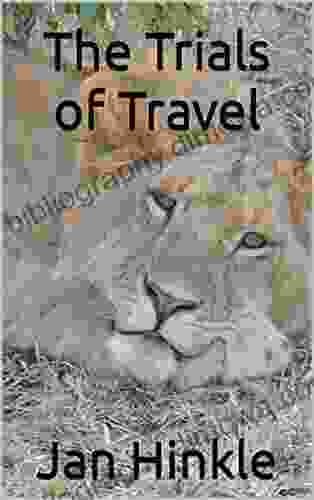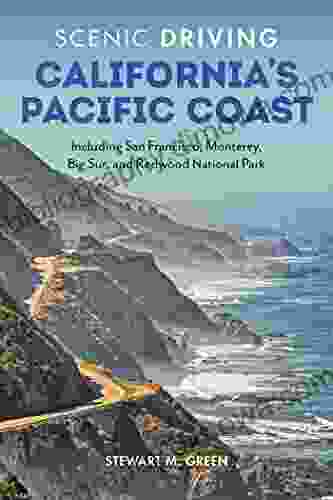From Classical Paths to Path Integrals

Quantum mechanics is a fundamental theory in physics that describes the physical properties of nature at the scale of atoms and subatomic particles. It is based on the idea that energy, momentum, angular momentum, and other quantities are quantized, meaning they can only exist in discrete values. Quantum mechanics has played a significant role in the development of many modern technologies, including lasers, transistors, and nuclear weapons.
4.4 out of 5
| Language | : | English |
| File size | : | 152688 KB |
| Text-to-Speech | : | Enabled |
| Screen Reader | : | Supported |
| Enhanced typesetting | : | Enabled |
| Print length | : | 658 pages |
One of the most important concepts in quantum mechanics is the path integral. The path integral is a mathematical tool that can be used to calculate the probability of a particle moving from one point to another. It was first developed by Richard Feynman in the 1940s, and it has since become one of the most powerful tools in quantum mechanics.
The path integral can be used to solve a wide range of problems in quantum mechanics, including the behavior of electrons in atoms, the evolution of the universe, and the scattering of particles from potential barriers.
In this article, we will provide a brief overview of the path integral formulation of quantum mechanics. We will begin with a review of classical mechanics, followed by a discussion of the Feynman path integral. We will then show how to use the path integral to calculate the propagator for a particle in a potential, the scattering amplitude for a particle scattering from a potential, and the energy levels of a particle in a bound state.
Classical Mechanics
Classical mechanics is the study of the motion of objects under the influence of forces. The laws of classical mechanics were first developed by Isaac Newton in the 17th century, and they have been used to great success to describe the motion of everything from planets to pendulums.
The fundamental concept in classical mechanics is the force. A force is a push or a pull that can change the motion of an object. Forces can be either contact forces, which act when two objects are in contact with each other, or non-contact forces, which act over a distance. Examples of contact forces include friction and tension, while examples of non-contact forces include gravity and the electromagnetic force.
The laws of classical mechanics can be used to describe the motion of an object in terms of its position, velocity, and acceleration. The position of an object is its location in space, the velocity of an object is its rate of change of position, and the acceleration of an object is its rate of change of velocity.
The laws of classical mechanics can be used to solve a wide range of problems, including the motion of projectiles, the motion of planets around the sun, and the motion of fluids. However, classical mechanics breaks down when applied to the motion of objects at the scale of atoms and subatomic particles. This is because quantum mechanics introduces a new set of rules that govern the behavior of objects at this scale.
The Feynman Path Integral
The Feynman path integral is a mathematical tool that can be used to calculate the probability of a particle moving from one point to another. It was first developed by Richard Feynman in the 1940s, and it has since become one of the most powerful tools in quantum mechanics.
The Feynman path integral is based on the idea that a particle can move from one point to another by following any path that is consistent with the laws of physics. The probability of a particle following a particular path is given by the exponential of the action for that path.
The action is a mathematical quantity that is related to the energy of the particle. The action for a path is given by the integral of the Lagrangian along the path.
The Lagrangian is a mathematical function that describes the energy of the particle as a function of its position and velocity.
The path integral can be used to calculate the probability of a particle moving from one point to another for any potential energy function. This makes the path integral a very powerful tool for solving a wide range of problems in quantum mechanics.
Applications of the Path Integral
The path integral can be used to solve a wide range of problems in quantum mechanics, including the behavior of electrons in atoms, the evolution of the universe, and the scattering of particles from potential barriers.
One of the most important applications of the path integral is to the calculation of the propagator for a particle in a potential. The propagator is a function that gives the probability of a particle moving from one point to another in a given amount of time.
The path integral can also be used to calculate the scattering amplitude for a particle scattering from a potential. The scattering amplitude is a function that gives the probability of a particle being scattered from a potential in a given direction.
The path integral can also be used to calculate the energy levels of a particle in a bound state. The energy levels of a particle in a bound state are the discrete values of energy that the particle can have.
The path integral is a powerful tool that can be used to solve a wide range of problems in quantum mechanics. It is a fundamental tool in the study of quantum mechanics, and it has played a significant role in the development of many modern technologies.
In this article, we have provided a brief overview of the path integral formulation of quantum mechanics. We have reviewed classical mechanics, discussed the Feynman path integral, and shown how to use the path integral to calculate the propagator for a particle in a potential, the scattering amplitude for a particle scattering from a potential, and the energy levels of a particle in a bound state.
The path integral is a powerful tool that can be used to solve a wide range of problems in quantum mechanics. It is a fundamental tool in the study of quantum mechanics, and it has played a significant role in the development of many modern technologies.
4.4 out of 5
| Language | : | English |
| File size | : | 152688 KB |
| Text-to-Speech | : | Enabled |
| Screen Reader | : | Supported |
| Enhanced typesetting | : | Enabled |
| Print length | : | 658 pages |
Do you want to contribute by writing guest posts on this blog?
Please contact us and send us a resume of previous articles that you have written.
 Book
Book Novel
Novel Page
Page Chapter
Chapter Text
Text Story
Story Genre
Genre Reader
Reader Library
Library Paperback
Paperback E-book
E-book Magazine
Magazine Newspaper
Newspaper Paragraph
Paragraph Sentence
Sentence Bookmark
Bookmark Shelf
Shelf Glossary
Glossary Bibliography
Bibliography Foreword
Foreword Preface
Preface Synopsis
Synopsis Annotation
Annotation Footnote
Footnote Manuscript
Manuscript Scroll
Scroll Codex
Codex Tome
Tome Bestseller
Bestseller Classics
Classics Library card
Library card Narrative
Narrative Biography
Biography Autobiography
Autobiography Memoir
Memoir Reference
Reference Encyclopedia
Encyclopedia Eric S Townsend
Eric S Townsend Jacob Eisenstein
Jacob Eisenstein Erik Nachtrieb
Erik Nachtrieb Peter A Sturrock
Peter A Sturrock Erin Hunter
Erin Hunter Fatima Shah
Fatima Shah Kent Nerburn
Kent Nerburn Philip Edward Jaeger
Philip Edward Jaeger Erica Derrickson
Erica Derrickson Harriet Muncaster
Harriet Muncaster Ian Smith
Ian Smith Eric Rohmann
Eric Rohmann Kirk Spader
Kirk Spader Elizaveta Shmalko
Elizaveta Shmalko Emura
Emura Etips Ltd
Etips Ltd Eleanor Estes
Eleanor Estes Rachel Yorke
Rachel Yorke Neil Duffield
Neil Duffield Rizwan Khan
Rizwan Khan
Light bulbAdvertise smarter! Our strategic ad space ensures maximum exposure. Reserve your spot today!

 Steven HayesExplore the Architectural Marvel and Cultural Tapestry of Rockefeller Center:...
Steven HayesExplore the Architectural Marvel and Cultural Tapestry of Rockefeller Center:... Beau CarterFollow ·6.2k
Beau CarterFollow ·6.2k Herbert CoxFollow ·17.8k
Herbert CoxFollow ·17.8k Kenzaburō ŌeFollow ·18.2k
Kenzaburō ŌeFollow ·18.2k Robert Louis StevensonFollow ·14.2k
Robert Louis StevensonFollow ·14.2k Bryan GrayFollow ·11.4k
Bryan GrayFollow ·11.4k Nathaniel PowellFollow ·13.6k
Nathaniel PowellFollow ·13.6k John GreenFollow ·11.9k
John GreenFollow ·11.9k William PowellFollow ·17.2k
William PowellFollow ·17.2k

 Trevor Bell
Trevor BellCrown of Nightmares: The Venatrix Chronicles - An Epic...
Embark on an epic journey filled with...

 Ike Bell
Ike BellChappelli Life Larrikins Cricket Eugenio Atenas: A...
Chapter 1: The...

 José Saramago
José SaramagoSocial Approaches to an Industrial Past: Delving into the...
Social Approaches to an Industrial Past is a...

 Brent Foster
Brent FosterIntangible Assets Increase To 84 Of The 500 Value: Learn...
The Rise of...

 Julio Ramón Ribeyro
Julio Ramón RibeyroIsland Voices Shelter Island 1655 - 2024: A Timeless Tale...
Unveiling the Tapestry of a Unique Island's...
4.4 out of 5
| Language | : | English |
| File size | : | 152688 KB |
| Text-to-Speech | : | Enabled |
| Screen Reader | : | Supported |
| Enhanced typesetting | : | Enabled |
| Print length | : | 658 pages |












